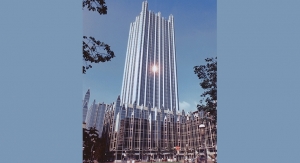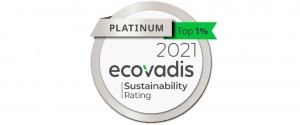06.30.15
Sustainability standards developed by global public health organization NSF International for carpet, wall coverings, resilient flooring, textiles, roofing and stone are referenced in the 2015 International Green Construction Code (IgCC). With the inclusion of these standards, architects, designers, engineers and others involved in the green building industry now have a wider selection of certified, IgCC-accepted sustainable building materials.
The IgCC is developed by the International Code Council (ICC) with Cooperating Sponsors the American Institute of Architects, ASTM International, ASHRAE, Illuminating Engineering Society (IES) and the U.S. Green Building Council (USGBC). It is the first model code to include sustainability measures for the entire construction project and its site — from design through construction, certificate of occupancy and beyond. The code helps make buildings more efficient, reduces waste and has a positive impact on health, safety and community welfare.
The 2015 IgCC provides a regulatory framework for green commercial construction for new and existing buildings. The next publication of IgCC is anticipated on June 1, 2015 and includes the following sustainability standards developed by NSF International and other partner organizations:
NSF/ANSI 140 Sustainability Assessment for Carpet
NFS/ANSI 342 Sustainability Assessment for Wallcoverings
NSF/ANSI 332 Sustainability Assessment for Resilient Flooring
NSF/ANSI 336 Sustainability Assessment for Textiles
NSF/ANSI 347 Sustainability Assessment for Roofing
ANSI/NSC 373 Sustainability Assessment for Natural Dimension Stone
“IgCC’s reference of NSF International’s sustainable assessment standards will strengthen the code by increasing the selection of sustainable building materials that have been evaluated against trusted and credible national standards,” said Jessica Evans, Director of Standards Development at NSF International.
“Standards and conformity assessments like those developed by NSF International are powerful tools in fueling innovation, acceptance and wider use of sustainable building materials,” said ICC CEO Dominic Sims, CBO. “These cutting edge ideas and technology will continue to play a pivotal role in the future development of the IgCC, which will align with ANSI/ASHRAE/IES/USGBC Standard 189.1 and the LEED green building program to form one regulatory tool beginning in 2018 to make it even easier for industry to deliver sustainable, high-performance buildings.”
These referenced standards were developed through the NSF National Center for Sustainability Standards (NCSS), which utilizes an accredited consensus-based process with balanced input from industry, regulatory, academic and end-user groups. The NCSS has developed sustainability standards through this consensus-based process for a wide range of product categories, including chemicals, commercial furnishings, flooring, building products and materials, and water treatment and distribution systems.
For more information about NSF International sustainability standards, please visit nsfsustainability.org .
The IgCC is developed by the International Code Council (ICC) with Cooperating Sponsors the American Institute of Architects, ASTM International, ASHRAE, Illuminating Engineering Society (IES) and the U.S. Green Building Council (USGBC). It is the first model code to include sustainability measures for the entire construction project and its site — from design through construction, certificate of occupancy and beyond. The code helps make buildings more efficient, reduces waste and has a positive impact on health, safety and community welfare.
The 2015 IgCC provides a regulatory framework for green commercial construction for new and existing buildings. The next publication of IgCC is anticipated on June 1, 2015 and includes the following sustainability standards developed by NSF International and other partner organizations:
NSF/ANSI 140 Sustainability Assessment for Carpet
NFS/ANSI 342 Sustainability Assessment for Wallcoverings
NSF/ANSI 332 Sustainability Assessment for Resilient Flooring
NSF/ANSI 336 Sustainability Assessment for Textiles
NSF/ANSI 347 Sustainability Assessment for Roofing
ANSI/NSC 373 Sustainability Assessment for Natural Dimension Stone
“IgCC’s reference of NSF International’s sustainable assessment standards will strengthen the code by increasing the selection of sustainable building materials that have been evaluated against trusted and credible national standards,” said Jessica Evans, Director of Standards Development at NSF International.
“Standards and conformity assessments like those developed by NSF International are powerful tools in fueling innovation, acceptance and wider use of sustainable building materials,” said ICC CEO Dominic Sims, CBO. “These cutting edge ideas and technology will continue to play a pivotal role in the future development of the IgCC, which will align with ANSI/ASHRAE/IES/USGBC Standard 189.1 and the LEED green building program to form one regulatory tool beginning in 2018 to make it even easier for industry to deliver sustainable, high-performance buildings.”
These referenced standards were developed through the NSF National Center for Sustainability Standards (NCSS), which utilizes an accredited consensus-based process with balanced input from industry, regulatory, academic and end-user groups. The NCSS has developed sustainability standards through this consensus-based process for a wide range of product categories, including chemicals, commercial furnishings, flooring, building products and materials, and water treatment and distribution systems.
For more information about NSF International sustainability standards, please visit nsfsustainability.org .





